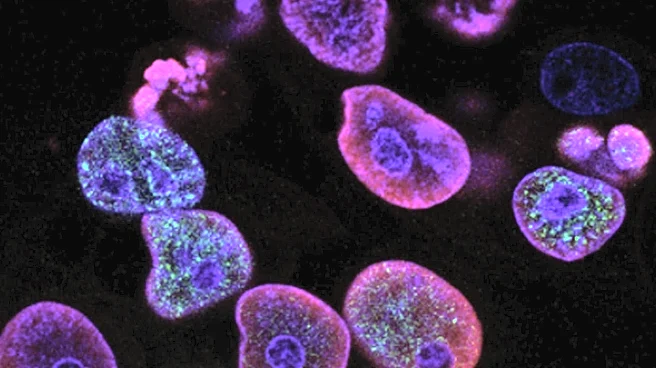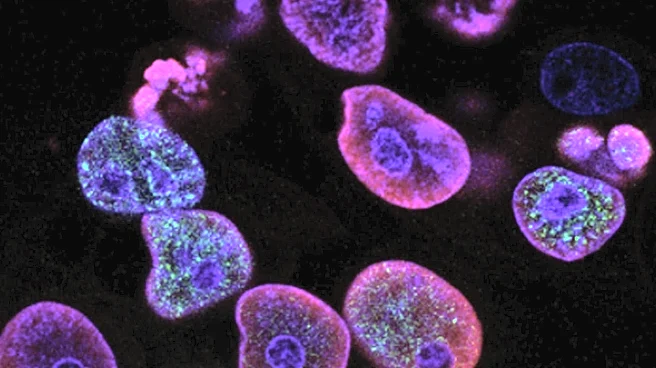What's Happening?
A study has demonstrated the potential of circulating tumor cells (CTCs) detected by Next Generation Flow Cytometry (NGF) as prognostic biomarkers in patients with asymptomatic monoclonal gammopathies, such as MGUS and SMM. The research found that the presence
of CTCs is associated with a higher risk of progression to symptomatic myeloma. This non-invasive method could help in risk stratification and early intervention strategies for patients at risk of developing multiple myeloma.
Why It's Important?
The ability to identify patients at higher risk of progression to multiple myeloma could significantly impact patient management and treatment strategies. By using CTCs as biomarkers, healthcare providers can better monitor disease progression and potentially intervene earlier, improving patient outcomes. This approach also highlights the importance of non-invasive diagnostic tools in managing complex diseases.
What's Next?
Further studies are needed to validate these findings and establish standardized cutoff values for CTC levels. Long-term follow-up studies could provide more insights into the role of CTCs in disease progression and help refine risk stratification models. This could lead to more personalized treatment plans and better resource allocation in clinical settings.













